Last Updated on 11/09/2020 by Veronica Jones
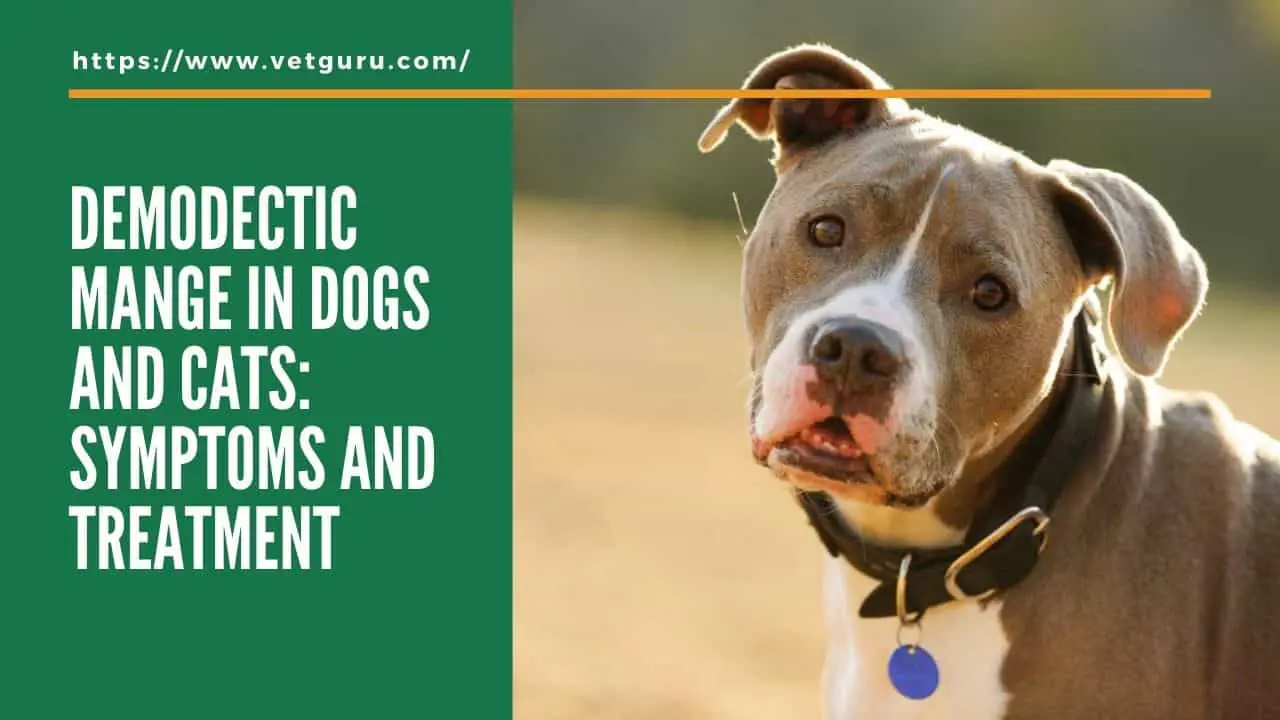
Demodectic mange in dogs and cats is caused by Demodex Canis, parasitic in hair follicles of dogs, sebaceous glands in the skin and even in internal organs. It is more common in dogs than in cats.>
Characteristics of the Demodectic Mange in Dogs
- Demodex Canis – the cause of the disease in dogs is a small mite, belonging to the Trombidiformes suborder, Demodicae Group
- Demodex Canis completes its development cycle within 25-30 days from the hatching stage of larvae -> pre-juvenile -> secondary lack -> adult form.
- Demodex Canis live on colloids in the hair follicles and sebaceous glands. In strongly developed cases of the disease, Demodex Canis can be found in the intestinal wall, lymph nodes, liver, spleen, kidneys of dogs.
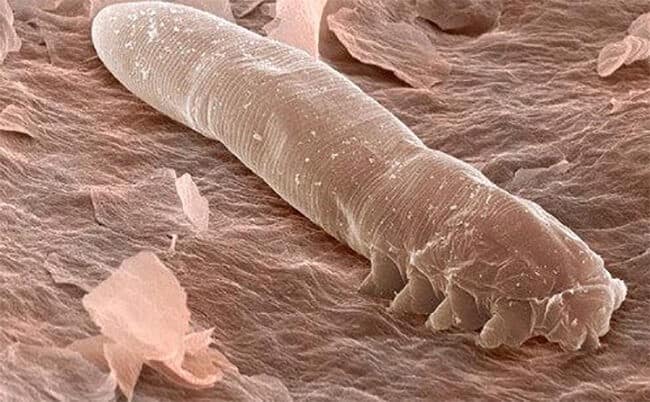
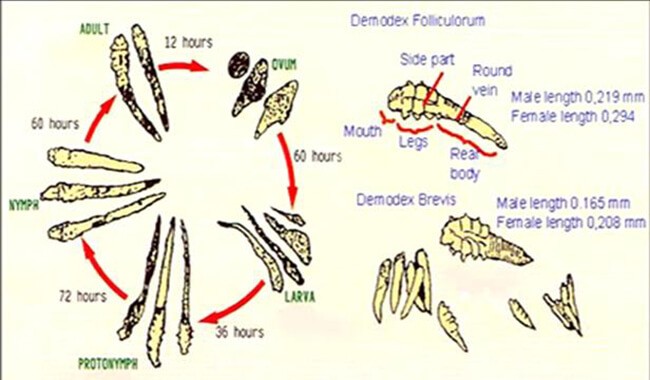
- 2 months old dogs could be infected, but the disease mainly found in dogs from 6 months to 2 years old.>
- The disease spreads through direct contact with infected dogs and dogs carrying the pathogen, transporting vehicles and care tools for infected dogs.>
- When parasitized in the hair follicles and sebaceous glands, Demodex Canis mechanically destroys the skin, stimulating the nerve endings with its live activity products. Due to local inflammation of the skin, the symptoms of hair loss, forming blisters and pustules appear.>
- The sick dog licks the lesions, then swallows the saliva, which includes the mite.>
- The necrotic tissue of the skin and the products of the decomposition of dermatitis appear an unpleasant stench.>
- Eventually, systemic intoxication developed.>
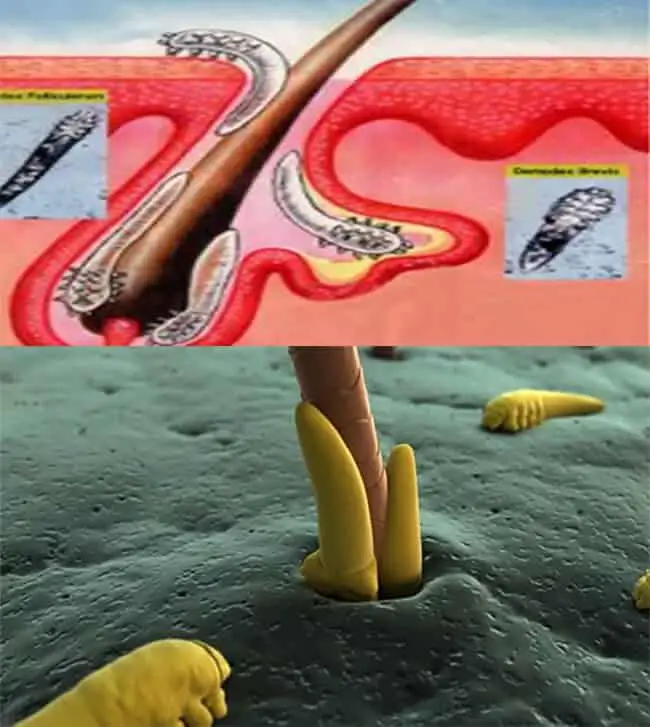
Read more >>> Kennel Cough in Dogs: Symptoms and Treatment
Signs of Demodectic Mange in Dogs
Demodectic mange in Dogs often progresses chronically; manifests itself in two forms: slight (scaly) or severe (pustular).
1. Scaly form
- The first lesions appear on the skin of the head, elbow joints, on the neck; then It spreads, invades the skin in other areas of the body.
- The hair in the lesions falls off, the skin turns to red, thickened, forming folds, covered with scales. Then the skin is cracked, the pus runs out through the cracks.
- Dogs lick the affected area a lot.
- The scaly form of Demodex Canis evolves over a few months.
2. Pus form
- In the affected area, the lumps are formed, filled with the products of the inflammation process, mite and secondary bacteria.
- The contents of the lumps come out through the hole in the top of it, then dry.
- The skin is red and forms folds. The dog smelled bad. The animals which have anaemia disease can die due to chronic infection.
Some Images about Demodectic Mange in Dogs Symptoms
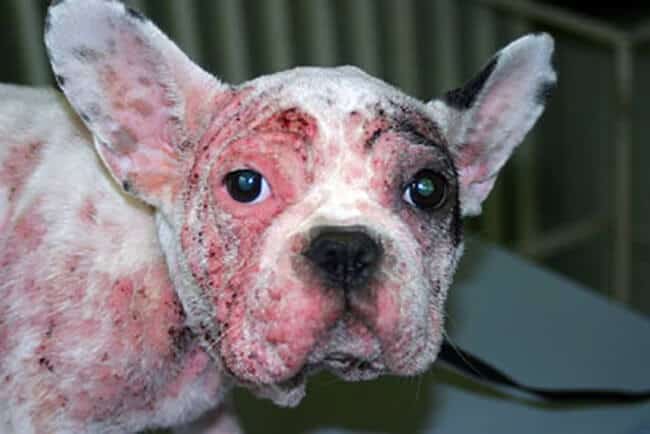
Diagnosis of Demodectic mange
Diagnosis of Demodectic mange disease should be based on epidemiology, clinical symptoms and most importantly, the results of the microscopic test.
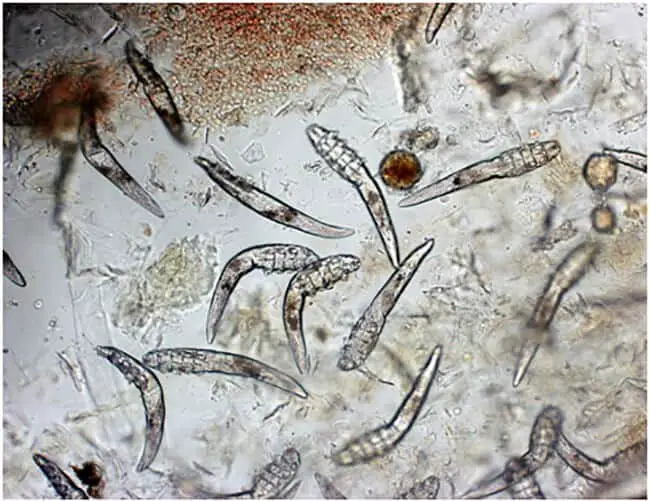
Prevention of Demodectic mange
- Clean the breeding area
- Quickly isolate the infected animals.
- Isolate all suspected animals; No contact between infected dogs and healthy dogs is allowed.
- Cages and cribs in which dogs are confined to diseases or suspected of being infected need to be disinfected with 5% alkaline solutions or by flaming methods.
- Daily check dogs of all 3 groups and treatment of infected animals.

Read more >>> How to Treat the Sarcoptes Scabies in Dog ( Sarcoptes Scabiei var Canis)
How to Treat Demodectic mange in Dogs
- Starting from destroying the Demodex Canis on the surface of the skin, bathe the dog with 1% chloroform solution, Hancox – spray. At the same time, cleaning and disinfecting the breeding area and nurturing tools.
- In small lesions of the skin (1-3 small area on the body), cut off the hair in the area, apply cotton bud soaked in gasoline, Aether or acetone, iodine alcohol 14% to the skin surface. Three days after applying anti-inflammatory ointments. Repeat this process 2 – 4 times at intervals of 5 – 6 days.
- With normal lesions (3 – 5 areas on the body), apply the cream to the skin and give an oral solution of 2% chloroform. Repeat the above process about 5-6 times at intervals of 5 – 6 days.
- In severe lesions of the disease (there are large lesions in different areas of the body). Treatment with 2% chloroform every 5 – 6 days (apply to the skin and give to drink). Then on the affected areas, apply anti-inflammatory ointment, antibiotic ointment (with a zinc content) daily, until the dog starts recovery.
- Inject ivermectin 1% at a dose of 1ml / 50kg bodyweight. In slight form, inject 1-2 times, and in severe form, inject 5 times or more at intervals of 7-10 days.
- If the dogs are sensitive to Ivermectin, a minimum dose of 0.2ml should be administered after injecting Demerol.
- In exceptional animals, when repeatedly inject with ivermectin, there may be an allergic reaction. These manifestations disappear after 2-3 days; In these cases, allergy treatment with Dimecdrol is required.
- Preparations of doramectin and Hanmectin are highly effective in the treatment of Demodex Canis. Dosage used 1ml / 10kg bodyweight, used 1 time / week; not less than 5 times.
Demodectic mange in dogs and cats seriously affects the health of the pet, so when there are signs of itching, the owner should bring them to the nearest veterinary facility for prompt treatment. Vetguru hopes that all information in this article helps you in making a good decision.>

